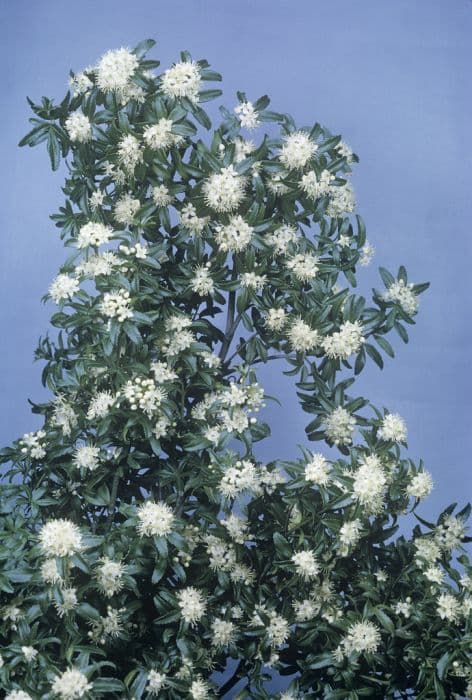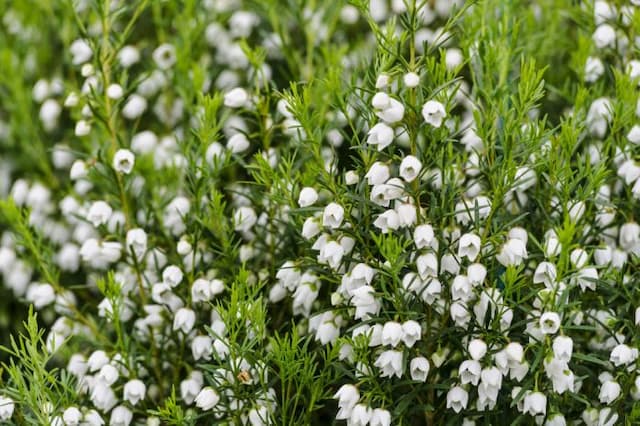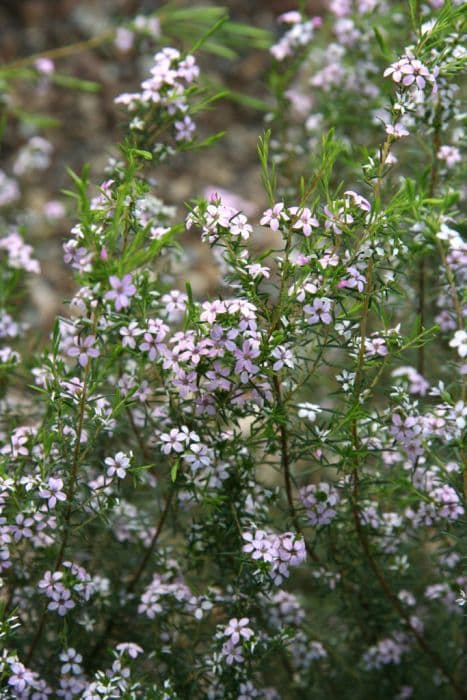Mexican orange [Sundance] Choisya ternata Sundance = 'Lich'
![Mexican orange [Sundance]](/_next/image?url=https%3A%2F%2Fplants-admin.emdemapps.com%2Fimages%2Fplants%2F%2Fimages%2F604b5381bcf0d.png&w=3840&q=75)
ABOUT
[Sundance] is a medium-sized evergreen shrub of rounded habit with glossy bright yellow, ternate leaves and small clusters of fragrant white flowers
About this plant
 Names
NamesSynonyms
Mexican Orange 'Lich', Sundance Mexican Orange, Golden Mexican Orange, Yellow-leaf Mexican Orange.
Common names
Choisya ternata 'Lich'.
 Characteristics
CharacteristicsLife cycle
Perennials
Foliage type
Evergreen
Color of leaves
Yellow-green
Flower color
White
Height
3 feet (0.91 meters)
Spread
3 feet (0.91 meters)
Plant type
Shrub
Hardiness zones
7
Native area
Mexico
Benefits
 General Benefits
General Benefits- Ornamental Appeal: 'Lich' adds visual interest to gardens with its bright golden-yellow to lime-green foliage, which can light up a shady spot.
- Aromatic Foliage: When crushed, the leaves emit a pleasant fragrance reminiscent of orange, adding a sensory experience to the garden.
- Low Maintenance: Sundance Mexican Orange Blossom is known for being easy to care for, requiring minimal pruning and being generally pest-resistant.
- Drought Tolerance: Once established, these plants are relatively drought-tolerant, making them suitable for xeriscaping or low-water gardens.
- Year-Round Interest: The evergreen nature of 'Lich' ensures that gardens have color and structure throughout the year, even in winter.
- Attracts Pollinators: The flowers of the Sundance Mexican Orange Blossom attract bees and butterflies, which are essential for pollination and maintaining a healthy ecosystem.
- Privacy Screening: With its dense growth habit, it can be used as a privacy screen or hedge to border property lines or obscure unsightly views.
- Versatility in Landscaping: This plant can be used in a variety of landscaping applications, including borders, foundation plantings, and as a specimen plant.
- Shade Tolerance: It can tolerate a good amount of shade, making it a suitable choice for underplanting or filling in darker areas of the garden.
- Deer Resistance: Sundance Mexican Orange Blossom is not a preferred plant for deer, which makes it a good option for areas with deer pressure.
 Medical Properties
Medical PropertiesThis plant is not used for medical purposes.
 Air-purifying Qualities
Air-purifying QualitiesThis plant is not specifically known for air purifying qualities.
 Other Uses
Other Uses- Photography Prop: Due to its bright yellow-green foliage, Choisya ternata Sundance, commonly known as Sundance, is often used by photographers as a lively backdrop or to add a splash of color to garden-themed photographs.
- Signature Garden Fragrance: Sundance has a refreshing citrus scent, and its leaves can be crushed and placed in small sachets to naturally perfume outdoor sitting areas.
- Natural Play Spaces: The dense and bushy nature of Sundance makes it suitable for creating hidden spaces or "secret gardens" for children to play in, stimulating imaginative play outdoors.
- Cultural Festivities: In some communities, the vibrant leaves of Sundance are used in festival decorations or during celebrations to symbolize growth and renewal.
- Educational Tool: Sundance can be used in schools or educational programs to teach children about plant life cycles, photosynthesis, and as an example of evergreen plants.
- Craft Material: The flexible stems and foliage of Sundance can be woven into handmade wreaths or used in floral arrangements for craft projects.
- Urban Wildlife Shelter: When planted in urban gardens, Sundance provides shelter and possible nesting sites for small birds due to its thick foliage.
- Insect Repellant: While not scientifically proven, some gardeners use the crushed leaves of Sundance as a natural deterrent for certain insects during outdoor activities.
- Theme Gardens: Sundance can be included in 'Moonlight' or 'White' gardens, where plants with lighter foliage create a glowing effect under moonlight or in the twilight hours.
- Green Roof Planting: Due to its hardiness and low maintenance, Sundance can be used on green roofs to add year-round color and insulation for buildings.
Interesting Facts
 Feng Shui
Feng ShuiThe Mexican Orange Blossom is not used in Feng Shui practice.
 Zodiac Sign Compitability
Zodiac Sign CompitabilityThe Mexican Orange Blossom is not used in astrology practice.
 Plant Symbolism
Plant Symbolism- Renewal: Choisya ternata Sundance, also known as Mexican Orange Blossom, often symbolizes renewal because of its lush, evergreen leaves and the repeated blooming cycle throughout the year.
- Celebration: The bright, citrus-scented blossoms are reminiscent of joyous occasions, making the Mexican Orange Blossom a symbol of celebration and happiness.
- Protection: In some cultures, the dense foliage and the strong aromatic presence of the plant are believed to offer protection and to ward off negativity.
- Good Luck: Because of its continuous growth and vibrant color, it's sometimes associated with good luck and prosperity.
- Charm: The ornamental beauty of the Mexican Orange Blossom makes it symbolic of charm and attraction, celebrating natural beauty and a charming personality.
 Water
WaterMexican Orange Blossom, or Choisya ternata ‘Sundance’, prefers to be watered when the top inch of soil feels dry. Generally, this means watering every 7 to 10 days, but you should adjust depending on the climate and season, as plant needs less in cooler months. When watering, do it thoroughly until water runs out of the bottom of the pot, which might mean using up to a gallon for larger plants. Ensure proper drainage to prevent root rot, and during winter, reduce watering frequency to match the plant’s reduced growth activity.
 Light
LightThe Mexican Orange Blossom thrives in a spot where it can receive full sun to partial shade. Ideally, it should get at least six hours of sunlight daily, but it will also tolerate some light afternoon shade, which can be beneficial in hotter climates. Do not place it in deep shade, as this will hinder its growth and flowering potential.
 Temperature
TemperatureMexican Orange Blossom grows best in temperatures between 50°F and 80°F. It can withstand temperatures as low as 20°F, but frost can damage it. For optimal growth, protect the plant from extreme cold and ensure it is not exposed to temperatures below the lower limit.
 Pruning
PruningMexican Orange Blossom should be pruned to shape the plant, remove any dead or damaged branches, and encourage bushier growth. The best time to prune is in late spring or early summer, after the plant has finished blooming. Prune lightly, as heavy pruning can reduce the number of flowers. Annual or biennial pruning is typically sufficient to maintain its shape and health.
 Cleaning
CleaningAs needed
 Soil
SoilThe best soil mix for Choisya ternata 'Sundance', commonly known as Mexican Orange Blossom, is a well-drained loam-based compost, such as John Innes No. 3. It should be enriched with organic material to ensure fertility and improve overall structure. A slightly acidic to neutral pH of 6.0 to 7.5 is ideal for this plant to thrive.
 Repotting
RepottingMexican Orange Blossom should be repotted every 2 to 3 years or when it outgrows its current pot. Spring is the best time to repot to minimize stress on the plant and to give it a full growing season to establish in its new container.
 Humidity & Misting
Humidity & MistingMexican Orange Blossom prefers moderate humidity levels but is quite adaptable and can tolerate the varying humidity conditions typically found in a home or garden setting. There's no strict humidity requirement, but avoiding extremely dry air is beneficial for the plant's health.
 Suitable locations
Suitable locationsIndoor
Place in bright, indirect light and ensure good air circulation.
Outdoor
Provide full sun to part shade and shelter from strong winds.
Hardiness zone
7-10 USDA
 Life cycle
Life cycleChoisya ternata Sundance, commonly known as Mexican Orange 'Sundance', begins its life as a seed which, once germinated, grows into a young seedling with characteristic bright yellow-green foliage. The seedling stage transitions into a juvenile phase where it develops a more robust root system and foliage structure. As it matures into adulthood, this evergreen shrub forms a dense, rounded habit and produces clusters of fragrant, star-shaped white flowers primarily in late spring, with possible repeat blooming in autumn. After pollination, the flowers develop into small, inconspicuous fruits which contain seeds, completing the reproductive cycle. Over time, in optimal growing conditions, the mature plant can reach up to 2.5 meters in height and spread. The plant's life cycle continues as long as it is healthy, with regular seasonal growth and flowering, and can live for many years with proper care.
 Propogation
PropogationPropogation time
Spring-Early Summer
Propogation: Choisya ternata Sundance, commonly known as Mexican Orange 'Lich', can be propagated by semi-hardwood cuttings. The best time to take these cuttings is during the late summer. To propagate, select a healthy, non-flowering shoot and cut a segment around 4 to 6 inches (10 to 15 centimeters) long, ensuring there are at least a couple of leaf nodes present. Strip the lower leaves and dip the cut end into rooting hormone to encourage root growth. Then, plant the cutting into a pot filled with a well-draining potting mix, and keep it moist but not waterlogged. Cover the pot with a plastic bag or place it in a propagator to maintain high humidity. Roots typically develop within a few weeks, after which the new plant can be gradually acclimatized to normal conditions before being planted out.









